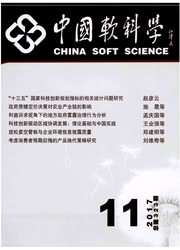

 中文摘要:
中文摘要:
识别问题是货币危机研究的基础,文献通常构建外汇市场压力指数,通过确定其临界值进行识别。传统法需假定该指数服从正态分布;近年出现的选阈识别法混淆了统计意义上的极值和经济意义的危机,因而都无法准确识别危机。本文将货币危机视为外汇市场的极值事件,提出了一种新的基于重现水平的货币危机识别法,有效放松了传统法的分布假设,并涵盖其为特例。对1994年1月至2007年6月中国外汇市场的实证结果表明:新方法对不同参考货币和外汇市场压力指数的一致性更强;期间共识别出3次货币危机或至少外汇市场承受巨大压力的时期;05年7月汇改后中国未出现重大外汇市场压力;以美元作为参考货币的传统法和选阈法在中国完全失效。
 英文摘要:
英文摘要:
Identification is a fundamental issue for research in currency crisis.A standard practice in related literature is to construct exchange market pressure index and identify crisis by determining a critical value for the index.The traditional approach relies on the assumption of normality of the index,and an identification approach is proposed recently using threshold selection in extreme value theory confuses extremes in statistical context with crisis in economic sense.Therefore,they both fail to identify crisis accurately under many circumstances.This paper proposes a new identification approach based on return level and extreme value statistics,which is capable of relaxing the normality assumption in traditional approach,yet covers it as a special case.An empirical study on China's foreign exchange market demonstrates that:Our new approach shows remarkable consistency among different pairs of reference currencies and exchange market pressure indices;three currency crises or at least extraordinarily high pressure in exchange market are identified;no such pressure is noted in China after the reform of exchange rate regime in July 2005;both the traditional approach and the threshold approach with the reference of US dollar currency are ineffective in China.
 同期刊论文项目
同期刊论文项目
 同项目期刊论文
同项目期刊论文
 Simulation of exit choosing in pedestrian evacuation with consideration of the direction visual fiel
Simulation of exit choosing in pedestrian evacuation with consideration of the direction visual fiel A new model for studying the SO-based pre-trip information release strategy and route choice behavio
A new model for studying the SO-based pre-trip information release strategy and route choice behavio A cellular automaton model of traffic considering the dynamic evolution of velocity randomization pr
A cellular automaton model of traffic considering the dynamic evolution of velocity randomization pr Continuum modeling of park-and-ride services in a linear monocentric city with deterministic mode ch
Continuum modeling of park-and-ride services in a linear monocentric city with deterministic mode ch Route choice in pedestrian evacuation under conditions of good and zero visibility: Experimental and
Route choice in pedestrian evacuation under conditions of good and zero visibility: Experimental and 期刊信息
期刊信息
